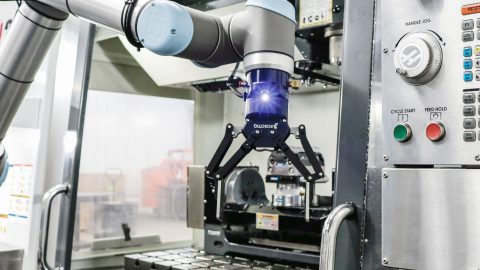
Today, along with the development of science and technology, industrial robots are also becoming more flexible and versatile.
For example, in the last decade, industrial robots were then known as tools to perform simple and repetitive tasks. This type of robot is likened to “blind” workers. Because they are set up to operate on a fixed procedure, they are not capable of self-detection and self-correction, resulting in the majority of processes still requiring operators.
However, thanks to new technologies such as optical sensors, digital twins, 5G networks, etc the disadvantages of industrial robots have been almost completely eliminated. Sensors provide “digital vision” to the robots in all manufacturing operations, from clamping, gripping, arranging goods to cutting, welding, machining and 3D printing, etc. An integrated robot The sensor is capable of recognizing the position, shape and state of the object being manipulated. As a result, clamping, holding and manipulating the object will be done more accurately, at the same time, some robots are also set up to send notifications to the operator if an error occurs, or ability to solve those problems yourself.
For some industries that require the handling of large metal sheets such as the manufacture of cars and electric trains, the role of industrial robots is irreplaceable. Robotic arms can be parallel to hold the role of holding and processing precisely, something that humans can not do. On the other hand, thanks to scanning technology, small deformations on the metal surface can be detected and refined before they directly affect product quality.
Depending on the needs of each industry, managers can choose to integrate 2D or 3D vision technology for their businesses.
2D vision is a technique set up to track the object in three degrees of freedom (x, y and angle angles). All three elements are represented on a single image. The main drawback to using 2D vision is the inability to determine the thickness of the object, and the inability to find errors behind the scanned plane. Robots with integrated 2D vision are often used to check dimensions and take objects off the conveyor belt.
Meanwhile, the robot with integrated 3D vision can determine the position, shape, state of the object in six degrees of freedom (x, y, z axis, angle, deviation and angle). To do this, the 3D vision system builds itself a three-dimensional model of the object based on data received from sensors placed at different locations. The model not only plays the role of adjusting the operations of the robot, but also helps the operator control the product quality. It can be said that the application of digital vision technology has opened a revolution for the robotics industry.
(To be continued)
Productivity and Quality Office